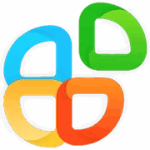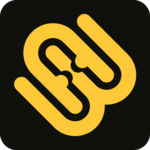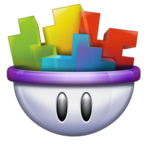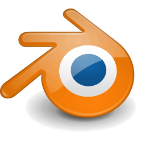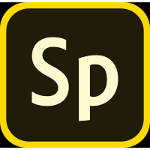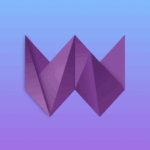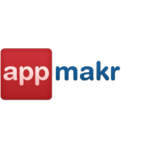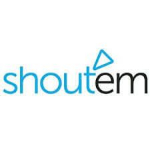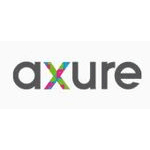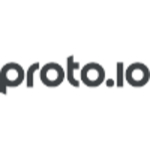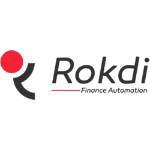TechnologyCounter provides genuine, unbiased real user reviews to help buyers make informed decisions. We may earn a referral fee when you purchase through our links, at no extra cost to you.
List of 15 Best App Design Software
Showing 1 - 15 of 48 productsAppy Pie is a solution for creating mobile apps without any coding skills. Designed for individuals and small businesses, Appy Pie offers a user-friendly platform to bring your app ideas to life. With its drag-and-drop interface and customizable feat...Read Appy Pie Reviews
AppMachine is a all-in-one solution for creating beautiful and functional mobile applications. From small businesses to large corporations, AppMachine empowers users to effortlessly design and launch apps without any coding skills. With its user-frie...Read AppMachine Reviews
GameSalad, an innovative game development platform that empowers creators of all levels to bring their ideas to life. With its user-friendly interface and drag-and-drop design, GameSalad makes it easy to create engaging and interactive games without...Read GameSalad Reviews
Blender is a 3D animation software. Developed by a community of passionate artists and programmers, Blender offers a wide range of features and tools for creating stunning visual effects, 3D models, and animations. With its user-friendly interface an...Read Blender Reviews
Say goodbye to complicated design software and hello to Adobe Spark is a tool for creating stunning graphics, videos, and web pages in just a few clicks. With a user-friendly interface and endless customization options, Adobe Spark is the perfect cho...Read Adobe Spark Reviews
Webix is a JavaScript UI library that offers developers a wide range of customizable is a components for creating modern and user-friendly web interfaces. With its flexible and versatile tools, Webix simplifies the process of web development and enha...Read Webix Reviews
Appmakr is a and user-friendly software that allows you to create custom mobile apps without any coding or technical expertise. With a simple drag-and-drop interface, its perfect for individuals and businesses alike who want to harness the potential...Read Appmakr Reviews
Shoutem the ultimate platform for building mobile apps without any coding knowledge. With its user-friendly interface and powerful features, Shoutem makes it easy for businesses and individuals to create custom apps that engage and connect with their...Read Shoutem Reviews
BuildFire is a all-in-one app development platform that empowers businesses and organizations of all sizes to easily create mobile apps without the need for coding or technical expertise. With a user-friendly interface and a wide range of customizabl...Read BuildFire Reviews
Axure RP is a prototyping and wireframing tool used by designers, product managers, and developers to create interactive and functional prototypes with ease. With its intuitive interface and extensive library of elements, Axure RP allows users to bri...Read Axure RP Reviews
Proto.io is a powerful, user-friendly prototyping tool that allows you to bring your ideas to life. With its intuitive interface and wide range of features, Proto.io helps you create interactive and realistic prototypes for web and mobile application...Read Proto.io Reviews
OmniGraffle is a design tool that is taking the digital world by storm. With its intuitive interface and versatile capabilities, it allows users to create visual representations of ideas, processes, and data with ease. Whether you are a professional...Read OmniGraffle Reviews
Balsamiq is a user-friendly wireframing and mockup tool that allows designers to quickly and effortlessly bring their ideas to life. With its intuitive interface and vast library of UI elements, Balsamiq is an essential tool for any design process, m...Read Balsamiq Reviews
Mockplus is a and user-friendly prototyping tool designed for UX/UI designers, product managers, and developers. With its intuitive drag-and-drop interface and rich library of pre-designed components, Mockplus streamlines the process of creating inte...Read Mockplus Reviews
ROKDI is a billing software with integrated features for GST and advance billing. It offers a variety of customizable reports and returns, making it a comprehensive solution for all billing needs. Say goodbye to the hassle of multiple tools and swit...Read Rokdi Reviews
- What Is App Design Software?
- Top Reasons Why Businesses Need App Design Software?
- What Are the Top Key Features of App Design Software?
- What Are the Top Benefits of App Design Software?
- What Are the Steps to Choose the Right App Design Software?
- What Are the Types of App Design Software for Different Industries?
- What Are the Technology Trends for Best App Design Software?
- What Are the Deployment Options for App Design Software?
What Is App Design Software?
App design software refers to a type of software that is utilized for the purpose of creating, modifying, and generating the user interface and design elements of mobile applications. This platform enables users to develop applications without possessing any prior coding expertise.
Commonly, it encompasses a collection of instruments that incorporate a drag-and-drop functionality for the purpose of organizing the design components, wire-framing capabilities, testing tools, animation, and several other layout alternatives. Certain software suites have integrated features that facilitate the comprehensive management of the whole development process, spanning from the first design phases through the final release.
For instance, the development of an application can involve the utilization of a design application that offers a diverse range of textual elements, buttons, icons, template images, and several other customizable choices. The application interface allows users to efficiently manipulate design items by easily performing actions such as dropping, resizing, duplicating, and making minor alterations.
Through the act of connecting design elements, users have the ability to define the desired alterations to a website upon completion of a specific method. This facilitates the process of developing a mobile application that is user-centric, featuring seamless and instinctive navigation.
Once the designer has reached a state of contentment with the design, the application can undergo testing through two methods: execution on an emulator or deployment on a physical device. During the testing phase, the designer has the ability to utilize testing tools in order to detect and rectify any software defects, commonly referred to as bugs, and implement any required modifications.
Subsequently, the designer has the capability to release the application onto the app store, so enabling other users to download, evaluate, and provide feedback on its performance.The duration required for the implementation of trust accounting software might significantly differ based on factors such as the specific type of software employed and the programming language utilized in its development.
Generally, the implementation of trust accounting software is a straightforward procedure that can be completed within a short span of time, typically requiring no more than a few minutes.
Top Reasons Why Businesses Need App Design Software?
1. App design software enables organizations to easily and cost-effectively create unique mobile applications that are branded to their specifications.
2. The provision of program-generated templates avoids the necessity for manual coding.
3. Through the utilization of cutting-edge technology, businesses have the capability to optimize user experience, leading to heightened levels of engagement and enhanced consumer loyalty.
4. The utilization of online app design tool technology allows enterprises to efficiently evaluate and implement novel application functionalities.
5. Automated application design solutions possess the capability to streamline development procedures and diminish the time required to bring a product to market.
6. The app design tool significantly reduces the amount of time, expense, and effort that enterprises need to invest in the development of their applications.
7. The incorporation of robust functionalities, like as push alerts, data syncing, and payment processing, is facilitated by this technology, enabling businesses to seamlessly integrate these elements into their application design.
8. The best app design software offers a user-friendly interface that facilitates the efficient management of content on intuitive devices.
9. The utilization of this technology aids enterprises in streamlining and minimizing the intricacy associated with the creation and administration of mobile application development procedures, all without the need for human coding.
10. The utilization of technology enables organizations to maintain visual consistency of their applications across various devices.
11. App design software allows organizations to expand their market reach, thereby leading to a growth in their user base and sales figures.
12. The utilization of this technology allows enterprises to establish a cohesive and enhanced user experience through the development of a unified interface.
13. A best app design software expedites the progression of development, hence aiding in the mitigation of disturbances within the business process.
14. The utilization of the best tools for web design aids enterprises in the optimization of their application code, leading to enhanced loading speeds.
15. The best app design software facilitates time-saving for enterprises by reducing the amount of time required for troubleshooting and debugging activities.
What Are the Top Key Features of App Design Software?
The key features of app design software include:
1. Interface Designer – This functionality offers a graphical interface for constructing the user interface layout of an application, enabling users to conveniently design screens and navigation menus for their respective application.
2. Prototyping Capabilities – An further noteworthy characteristic is the capacity to create prototypes of the application design, enabling users to evaluate the visual and experiential aspects of their ultimate deliverable. This practice aids in ensuring that the ultimate outcome aligns with the user's intended design goals.
3. Drag-and-Drop Functionality – The inclusion of drag-and-drop functionality holds significance in best app design software due to its ability to facilitate efficient and effortless manipulation of interface elements by users.
4. Interactivity Tools – App design software commonly incorporates interactive aspects and functions in order to enhance the overall user experience and imbue the app with a sense of vitality. These may encompass various elements such as forms, animation, music, movies, and more tools, all of which are employed to generate captivating and interactive encounters for users.
5. Design Templates – Numerous application design platforms offer customers the ability to select from a diverse range of design templates and afterwards personalize them to achieve their preferred aesthetic and user experience.
6. Cross-Platform Support – The ability to support numerous operating systems is of significant importance for developers seeking to deploy their applications across many platforms.
7. Cloud-Based Solutions – The utilization of cloud technology in app development enables developers to conveniently access their applications from any device with internet connectivity.
8. User Testing – Application design software commonly has features for conducting user testing, enabling developers to efficiently and promptly collect valuable insights from user feedback.
9. Data Analytics – Application design software frequently has analytics functionalities that enable the monitoring of user behavior and interaction, so empowering developers to enhance their application for optimal outcomes.
10. Security Features – Security is a fundamental aspect of software design for applications, wherein the incorporation of authentication and encryption technologies serves to guarantee the robustness and safeguarding of the apps.
What Are the Top Benefits of App Design Software?
1. Increased Efficiency: App design software can allow developers to create more complex designs more quickly, saving valuable time.
2. Improved Quality: The best tools for web design can provide developers with more advanced design features and capabilities, resulting in higher quality apps.
3. Increased Flexibility: With best app design software, developers can more easily modify existing designs or create entirely new ones.
4. Increased Collaboration: App design software can enable multiple users to work on the same project at the same time, improving team collaboration. 5. Reduced Cost: App design software can significantly reduce development costs, as it eliminates the need for expensive coding and debugging tools.
6. Increased Accessibility: The best tools for web design can make it easier for users of all skill levels to create apps, allowing for more widespread accessibility.
What Are the Steps to Choose the Right App Design Software?
1. Identify the key requirements: Prior to selecting an application design software, it is imperative to ascertain the fundamental prerequisites that the software must satisfy in order to align with the business objectives.
2. Research design software options: After identifying the fundamental needs, app design tool is advisable to conduct research on the different software solutions for app creation that are currently accessible in the market. Please evaluate the characteristics, financial implications, and user-friendliness of the software.
Analyze and contrast the characteristics of various software tools, subsequently narrowing down the selection to those that align with your specific requirements.
3. Consider integration and availability of support: The assessment of software integration capabilities and the accessibility of technical support are crucial factors to be taken into account. The selection of software should include the capability to effortlessly interface with pre-existing tools and systems, in addition to offering technical support when required.
4. Evaluate the user experience (UX): An effective application design software should offer a superior user experience (UX), facilitating user comprehension and seamless navigation of the interface. Assess the user experience (UX) design of the software and ascertain its suitability for meeting one's requirements.
5. Request for a demonstration: After selecting a limited number of app design software solutions, it is advisable to request a demonstration of each in order to do a more comprehensive evaluation of the software's features, functionality, and user experience.
The app design tool is advisable to compile a comprehensive list of the various features offered by the software that are of interest, while also evaluating the extent to which the software effectively meets one's specific requirements.
6. Ask for a trial version: Kindly request a trial version of the application design software prior to making a purchase. This opportunity will enable you to observe the software's performance in real-time and assess its alignment with your desired functions and objectives.
7. Determine cost and scalability: Ultimately, the best tools for web design is crucial to ascertain the comprehensive financial implications of the program, as well as its potential for future upgradability and scalability.
The app design tool should possess the capacity to adapt and expand in tandem with the growth of your organization, as well as the capability to undergo upgrades to newer versions, if deemed necessary.
What Are the Types of App Design Software for Different Industries?
For the different industries, there are a variety of different types of app design software including:
1. User Experience (UX) Design: The field of UX design centers its attention on optimizing the user experience by developing interfaces that are intuitive and accessible across a variety of interactive platforms, including web, desktop, and mobile applications. Prominent tools under this particular area encompass wireframes, Adobe XD, Axure, and Figma, among other notable options.
2. Interface Design: Interface design primarily concentrates on the visual aspects of the user interface, encompassing many elements such as layout, color schemes, typography, and iconography. Prominent tools utilized in this domain encompass Sketch, InVision, Adobe Photoshop, and Bonfire, among various others.
3. Visual Design: The primary objective of visual design is to establish a cohesive and visually appealing aesthetic throughout the application or website. In this particular domain, software applications like as Adobe Illustrator, Adobe Photoshop, and Adobe Premiere Pro have gained significant popularity.
4. Prototyping: Prototyping tools offer designers the means to actualize their concepts and evaluate various attributes and functionalities prior to the product's official release. Commonly used prototyping tools in the field of design include InVision, Framer, Marvel, and Similar.
What Are the Technology Trends for Best App Design Software?
In contemporary times characterized by technological advancements, various patterns have emerged in the realm of software design for applications. The fundamental emphasis in the design of mobile applications lies in the user experience and User Interface (UI).
The field of user experience is centered around the objective of delivering a streamlined, cohesive, and enjoyable experience for individuals utilizing mobile applications. The User Interface (UI) pertains to the visual and interactive aspects of applications, encompassing their aesthetic design and the manner in which users engage with them.
The current trajectory in the field of app design software is oriented towards the development of visually appealing, interactive, and user-centric applications. Designers are currently prioritizing the creation of a user interface that is characterized by a clear and comprehensible layout, an intuitive navigation system, and well-structured content.
Furthermore, app design tool developers are employing various technologies to enhance the efficiency and expediency of the design process. This is achieved through the utilization of contemporary libraries containing icons, color palettes, and other design assets.
Scalability emerges as a prominent theme within the realm of application development. The increasing prevalence of diverse gadgets has prompted developers to explore the creation of applications that can be seamlessly deployed across numerous platforms.
Online app design tool encompasses the utilization of responsive design techniques, the implementation of modular and interchangeable app components, and the integration of cross-platform technologies.
What Are the Deployment Options for App Design Software?
The deployment options for app design software will depend on the specific software that is used. Generally speaking, the options may include:
1. Web deployment: involves the hosting of apps in the cloud, enabling users to access them remotely over an internet connection.
2. Mobile Deployment: Applications have the capability to be instantly released to users via the App Store or Google Play, contingent upon the specific platform being utilized.
3. On Premise Deployment: Applications have the capability to be hosted on local workstations, allowing users to access them inside within the organization.
4. Local Deployment: Applications can be deployed on users' devices either through safe downloads or physical distribution methods.
